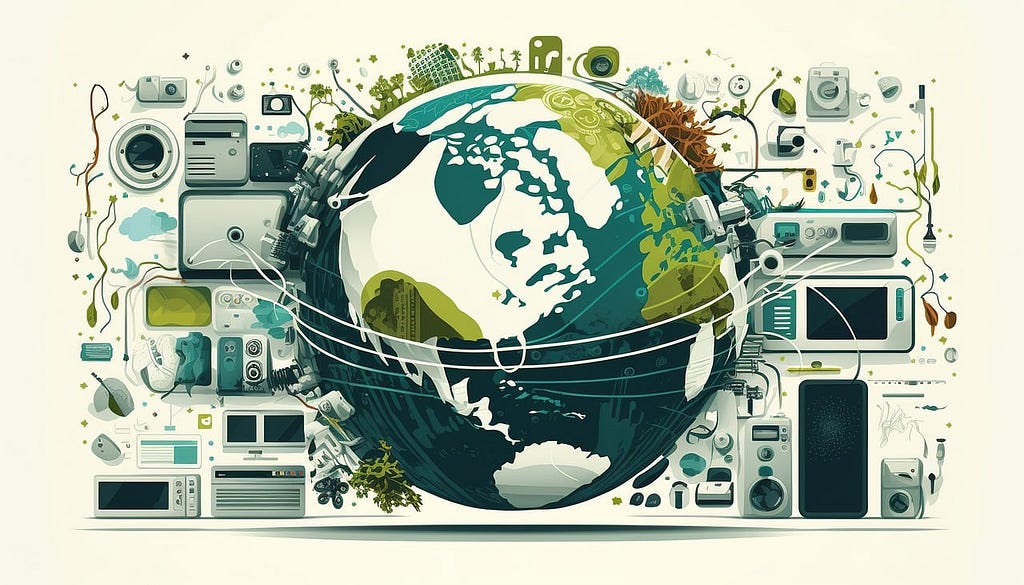Summary: The French association Data for Good released a white paper examining the environmental impact of language models. ChatGPT’s monthly usage emits 10,000 tons of CO2, equivalent to 0.1% of the yearly carbon footprint of individuals in France/UK. If ChatGPT+ with GPT-4 is used, the carbon footprint could increase by 10 to 100 times, contributing up to 10% of the annual carbon footprint. Recommendations to reduce the impact include using language models sparingly, optimizing training and usage, selecting low-carbon energy sources, and choosing cloud services with high environmental performance.

A Closer Look at the Carbon Footprint of Language Models and Sustainable Solutions
By [Your Name], AI Expert
The French association Data for Good recently released a white paper that explores the societal and environmental issues surrounding generative AI. One aspect that caught my attention was the environmental impact of language models, which is often overlooked. Here are the key takeaways:
TL;DR
World leaders have committed to reducing emissions to well below 2°C by 2050. However, in the digital space, emissions are increasing by 2-7% annually. The training of GPT-3, a popular language model, emitted a staggering 2200 tons of CO2 equivalent, which is comparable to 1600 return flights from Paris to New York. With 13 million users, the monthly usage of ChatGPT, a variant of GPT-3, contributes 0.1% to the yearly carbon footprint of individuals in France or the UK. If everyone used it today, it would contribute to 0.5% of our target footprint in 2050. The impact of ChatGPT+ using GPT-4 could be 10 to 100 times larger, adding up to 10% of our current yearly carbon footprint or 50% of our target footprint.
Yearly Carbon Footprint of a UK Citizen
To evaluate the environmental impact of anything, we can estimate its carbon footprint, which measures the total greenhouse gas emissions caused directly and indirectly. The average annual carbon footprint is approximately 8-13 tons per person in the UK or France, 21 tons in the USA, and 6 tons worldwide. To keep the global temperature increase below 2 degrees, we should aim to reduce our global carbon footprint to 2 tons per person by 2050.
Here are some examples to put the numbers into perspective:
- A return flight from Paris to New York emits 1.4 tons of CO2e.
- Aviation contributes 10% of the average yearly carbon footprint for a UK citizen.
- Watching 3 hours of video every day for a year emits roughly 2% of the average yearly carbon footprint for a UK citizen.
Training Impact
In the training phase, language models are fed with curated data to learn and answer requests. The study analyzed two large language models: Bloom and GPT-3. Bloom’s carbon footprint was initially estimated at 30 tons but revised to 120 tons after analysis. GPT-3’s carbon footprint was extrapolated to be 2200 tons, equivalent to 1600 return flights from Paris to New York.
Inference Impact
Inference in machine learning is when a trained model is used to make predictions on live data. The monthly carbon footprint of ChatGPT, which has 13 million active users making 15 requests on average, is 10,000 tons of CO2. This is larger than the training impact. For one user, the addition to the yearly carbon footprint is 9 kilos of CO2eq, equivalent to 0.1% of the current average annual carbon footprint or 0.5% of our target footprint. If ChatGPT+ with GPT-4 is used, the footprint could be 10 to 100 times larger, adding up to 10% of a French citizen’s carbon footprint or 50% of the target footprint in 2050.
Recommendations
Here are some recommendations to reduce the impact of using language models:
- Use language models reasonably and only in specific cases that truly require them.
- Optimize training and usage to reduce infrastructure usage and electricity consumption.
- Select the top country to host your server based on its energy’s carbon footprint.
- Choose cloud services with proven environmental performance, longer server usage, and data centers with high levels of sharing.
Interested in Reducing Your Impact?
Whether you’re an individual or a corporation, resources and experts are available to guide you on a sustainable path. Here are some suggestions:
At the individual level:
- Evaluate your carbon footprint using online tools.
- Learn about climate change science and actions you can take.
At the corporate level:
- Educate employees, perform audits, and measure your carbon footprint.
- Set up strategies to improve your ESG scores (Environmental, Social, and corporate Governance).
To explore AI solutions that can help your company evolve and stay competitive while balancing innovation and sustainability, consider connecting with us at hello@itinai.com. We can help you identify automation opportunities, define KPIs, select AI solutions, and implement them gradually. Check out our AI Sales Bot at itinai.com/aisalesbot for automating customer engagement and managing interactions across all customer journey stages.
Let’s leverage AI to redefine your way of work and make a positive impact.
List of Useful Links:
- AI Lab in Telegram @aiscrumbot – free consultation
- Balancing Innovation and Sustainability: Unpacking the Environmental Impact of Generative AI
- Towards Data Science – Medium
- Twitter – @itinaicom



























